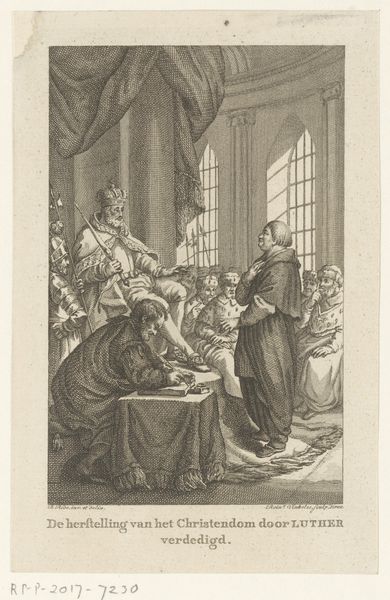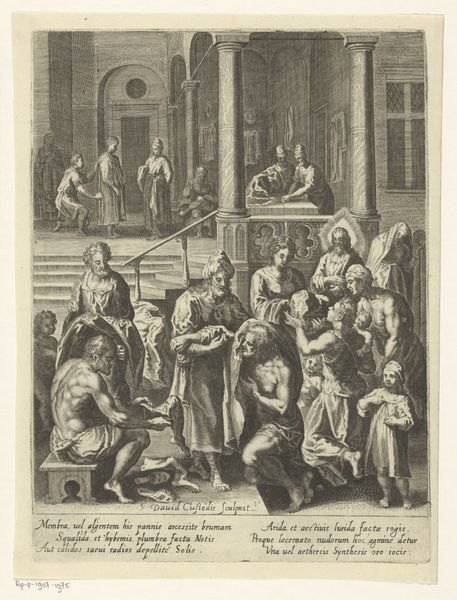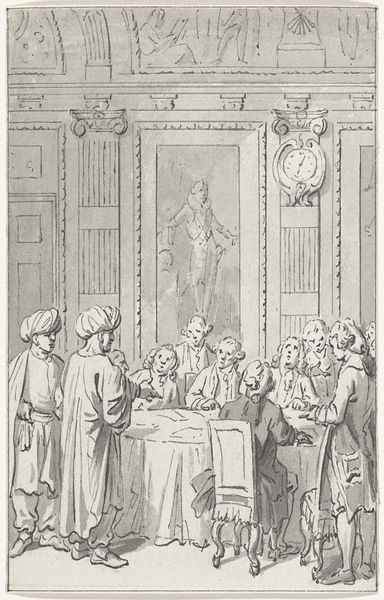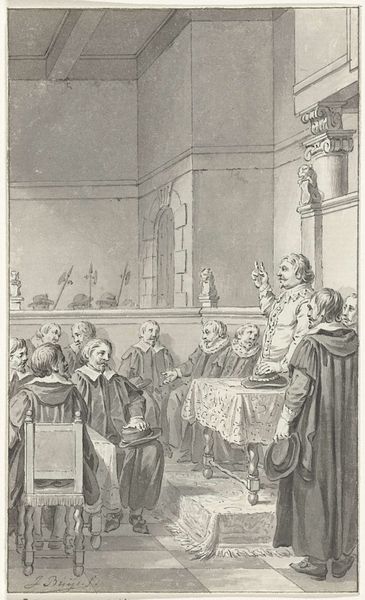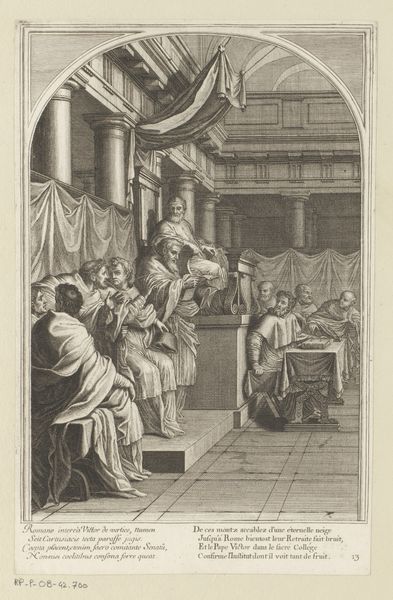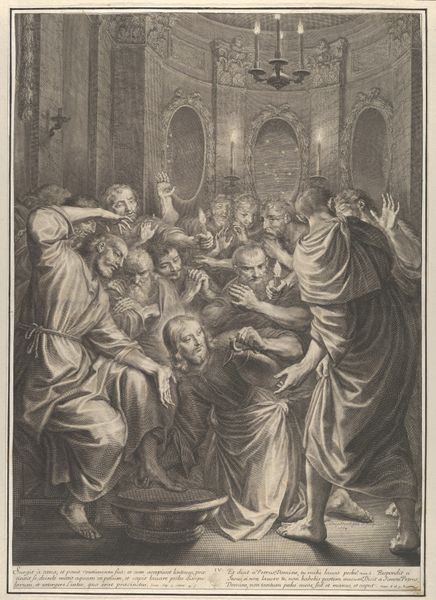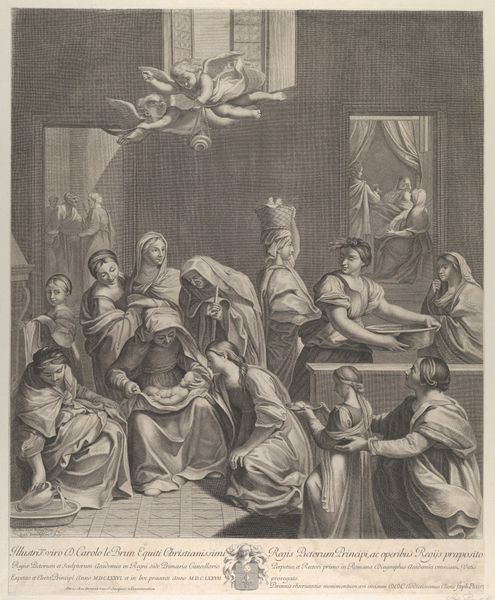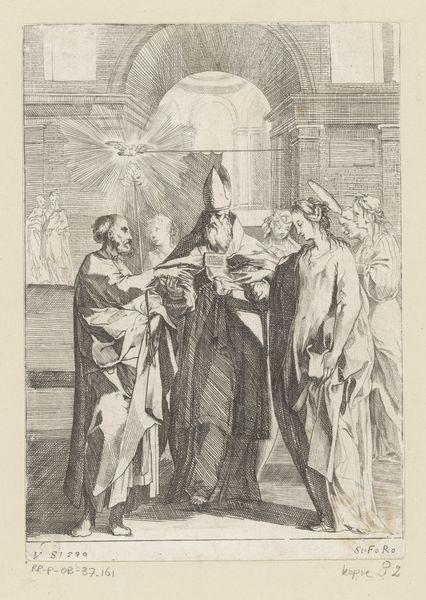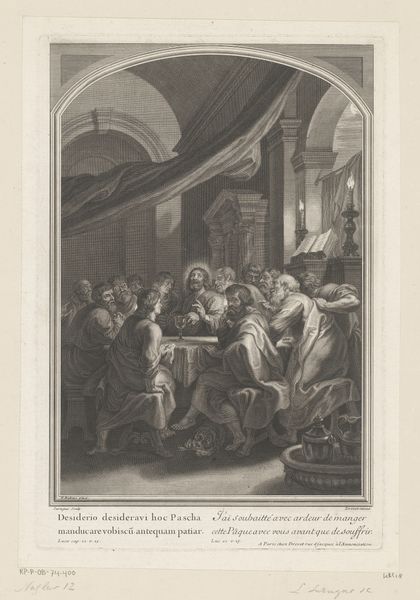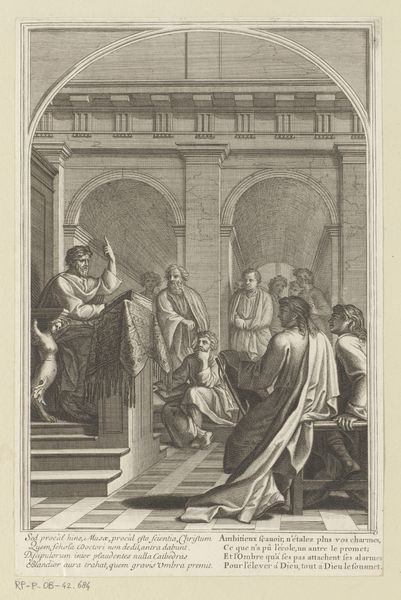
print, engraving
#
baroque
# print
#
old engraving style
#
caricature
#
history-painting
#
engraving
Dimensions: height 878 mm, width 608 mm
Copyright: Rijks Museum: Open Domain
Curator: Before us, we have “The Last Supper,” an engraving crafted between 1730 and 1772, now housed at the Rijksmuseum. Editor: It's austere. All these sharp lines and meticulous details—the overall effect feels emotionally removed, more like an architectural rendering than a moment of intense drama. Curator: Look closely, and the engraving’s formal construction is quite intriguing. The composition’s symmetry, though somewhat rigid, does direct our gaze precisely towards Christ’s central figure. Note also the contrasts—the light against dark shading, used not so much to evoke atmosphere, but to define the forms. Editor: But the setting! The columned hall feels almost pagan, yet familiar in the established visual language of religious iconography. And the pets—a dog and cat—down in front feel unusual to me. They are potent symbols of loyalty and domesticity but they bring also secularity to this well known religious topic. The overall mood of this piece seems more a comment than an expression of religious belief. Curator: That blend you mention—the intersection of sacred narrative within this architectural framework—reveals much about the period’s artistic approach. It’s all very carefully designed in relation to each element in the plane. Editor: Right—and consider the deliberate arrangement of the figures around the table, how they interact not just within the depicted scene but also within the pictorial space itself. Judas stands alone; he symbolizes betrayal. Curator: Indeed, and observing Judas' placement on the foreground in this baroque image can deepen one's appreciation of this print. We begin to understand not only what is being represented but the principles and concepts behind this print, its arrangement, how it’s carefully organized along vertical and horizontal planes to highlight key narrative moments and underlying thematic concerns. Editor: In conclusion, “The Last Supper” exists as an engraving to present visual structure—the architectural elements, linear details and overall symbolic weight of betrayal. The careful interplay between line and narrative create a powerful emotional moment for a print that seems unemotional at the first glimpse.
Comments
No comments
Be the first to comment and join the conversation on the ultimate creative platform.
